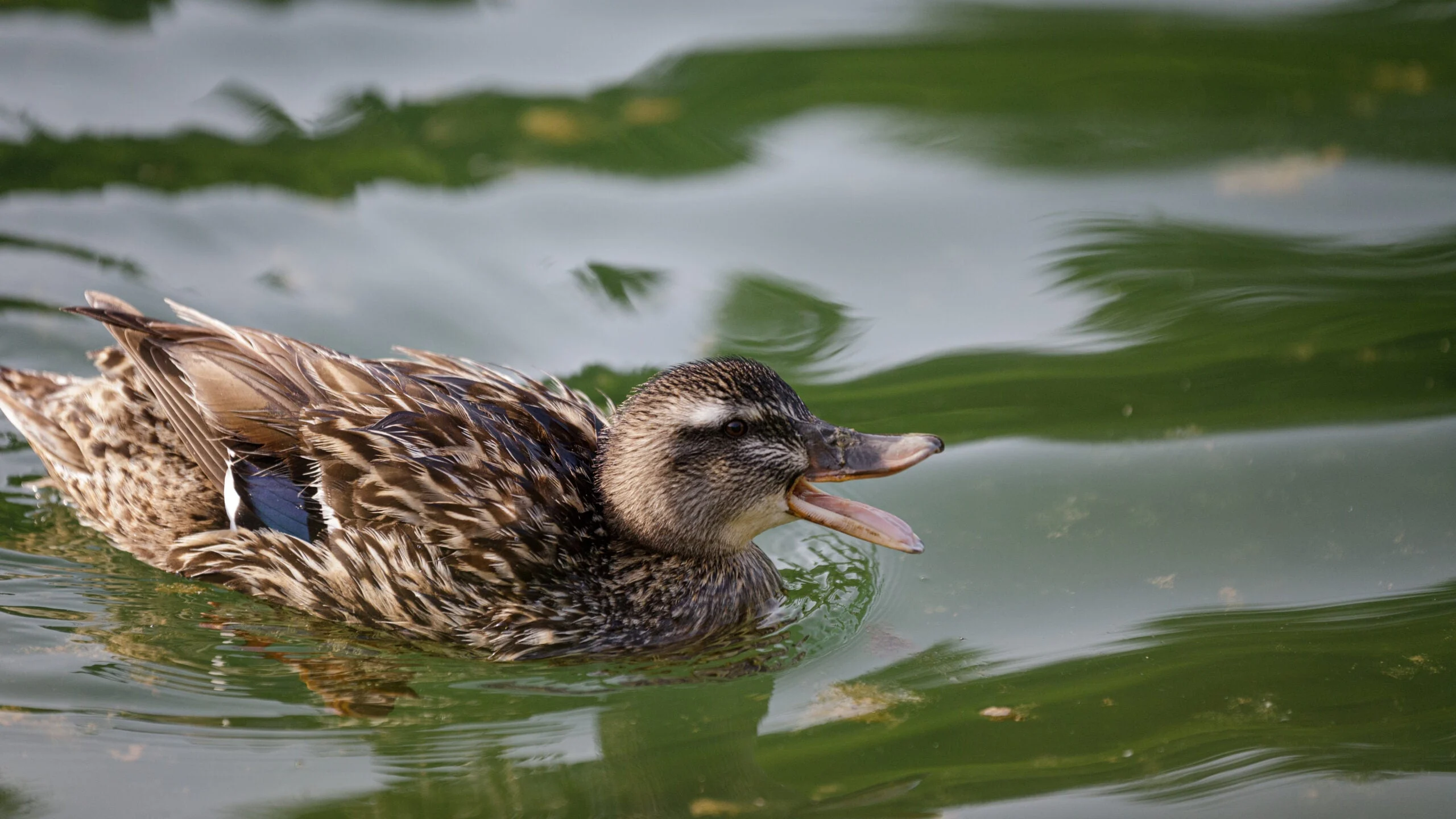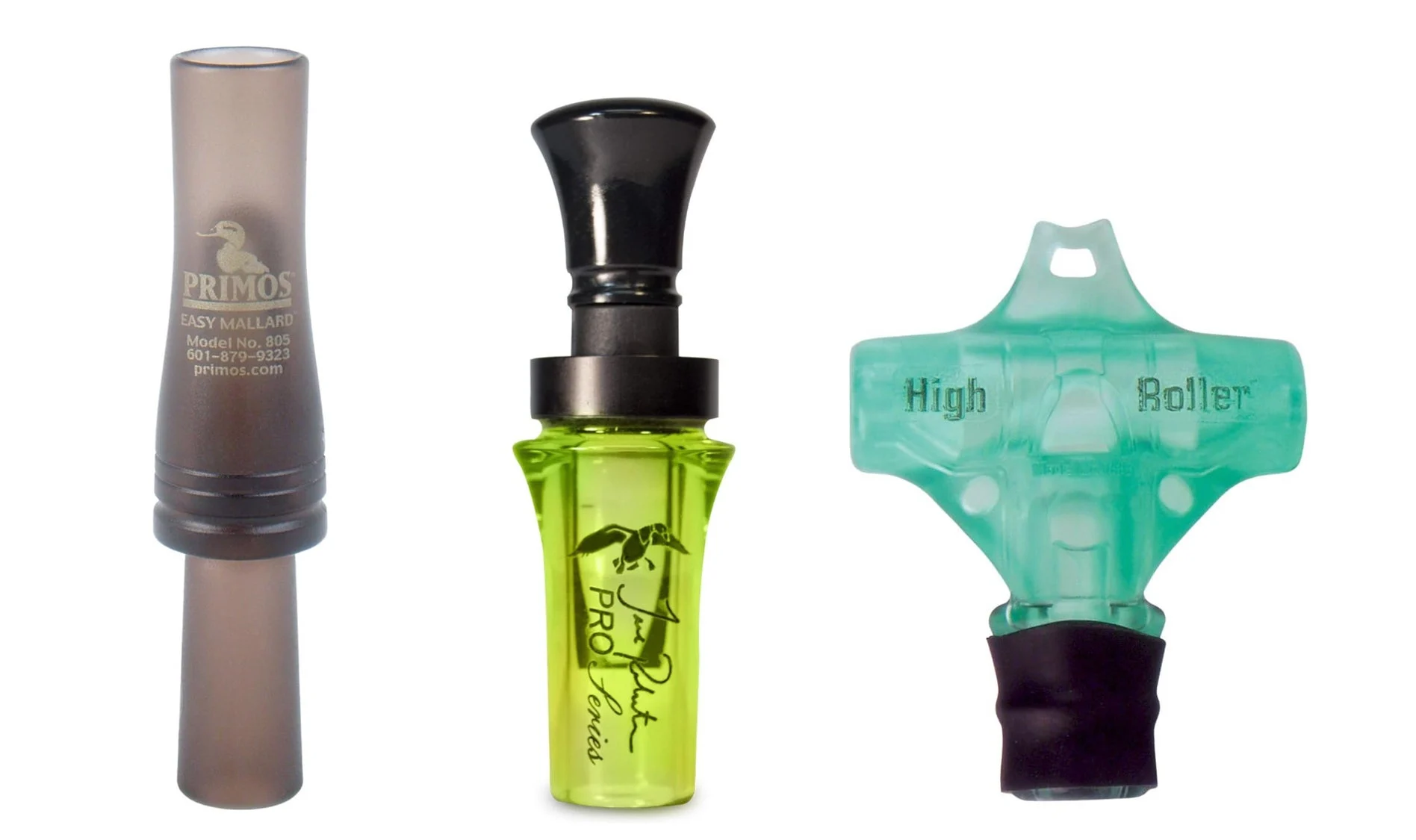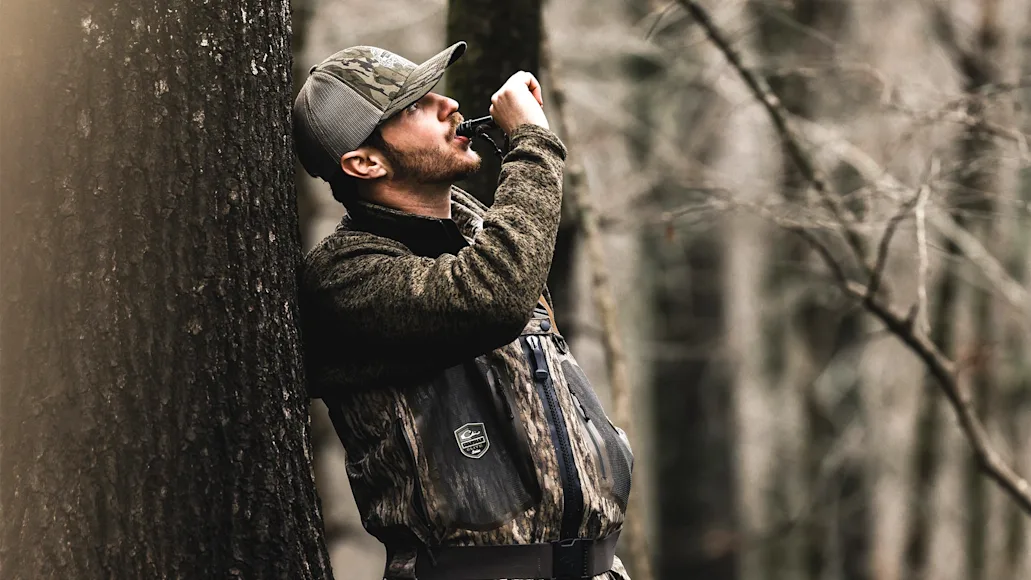_We may earn revenue from the products available on this page and participate in affiliate programs. Learn more ›
_
If you’re reading this, you probably suck at calling ducks. Don’t feel insulted, though, because most people suck at calling ducks. Nash Buckingham once wrote, “A duck call in the hands of a novice is one of the greatest conservation tools known to man.” Maybe that’s not entirely true, but what is true is that you could shoot a lifetime’s worth of ducks without ever learning how to call ducks, or even owning a duck call.
So why learn how to call ducks at all? Well, good calling absolutely does work under certain circumstances, and because of that, it will result in more ducks in the bag for you. It’s also an enjoyable part of the waterfowling experience. So, here’s everything you need to know to learn how to call ducks—and ultimately become a better duck hunter.
Table of Contents
Sound Like a Hen Mallard
Basic Duck Calls
How to Make the Key Sounds
Whistles and Grunts
How to Read Ducks
Listen to Live Birds
How to Call Ducks: First, Sound Like a Hen Mallard

More often than not when calling to ducks, you want to imitate the sounds of a hen mallard. Getty Images
There are some 30 huntable duck species in North America, but most duck hunters rely exclusively on the sounds of the hen mallard when they’re duck calling. There’s several reasons for that. Mallards are far and away the most common and most hunted duck species, and they’re one of the most responsive to calling. Mallard hens are also loud and vocal, and since they frequently mix with other dabbling duck species, their calls sound natural to all of them. Also, it’s just tradition. Though live ducks actually do far more whistling and peeping than quacking, folks still look at you weird if you do too much whistling in the blind, as if you’re a grown man, eating Skittles or something. So, the standard-issue duck call is designed to imitate the sounds of a Suzie, which is the universal nickname for a hen mallard. So, henceforth, when I generically say “duck call,” I’m referring to a hen mallard call.
Basic Duck Calls

Three types of duck calls from left to right: a polycarbonate single-reed, an acrylic double-reed, and a duck whistle.
Duck calls vary a bit in design, materials, and price, but they all have the same basic parts including a barrel, end piece, and reeds. J-frame calls are easier to disassemble, clean, and reassemble without affecting the sound. Louisiana-style calls provide wider tuning versatility.
Most calls have either one reed or two; single reeds tend to be higher pitched and capable of more volume, and so they’re generally favored by open-water and field hunters. Double-reed calls
are often softer in pitch and easier to blow with less air, making them a favorite for close quarters. Ducks calls are generally made of acrylic, polycarbonate, or wood. Acrylic calls are the most expensive, but they sound great and are easy to maintain. They provide loud, crisp sounds in the hands of a good caller. Polycarbonate calls are essentially plastic, and they can provide volume on par with acrylic calls. Some say they’re not quite as realistic; I say you and the ducks won’t hear the difference. An acrylic call is better looking but for most hunters, it won’t provide any better service than a polycarbonate one. Wooden calls are better looking than both, and they tend to provide a softer sound that’s ideal for close-in calling. But because moisture can cause the wood to swell, and because there’s a lot of moisture in duck hunting, wooden calls do require more maintenance.
A good caller can make any duck call sound good, but the best, most-expensive call will not help a terrible caller. Learn the basics on something inexpensive, and then, if you want to invest in a high-quality call, try several of them out to see which best suits you.
How to Call Ducks: The Four Key Sounds to Learn
Mallards have a wide vocabulary, but there are only a handful of calls a hunter needs to master, including the basic quack, the greeting call, the comeback call, and the chuckle (variations of this last sound can replicate both excited ducks flying in the air as well as ducks feeding on the water). It is a pure waste of words for me to attempt to describe what each of these calls sounds like when there are good Youtube videos. So here are some Youtube videos.
How to Quack
See How to Make the Quackon YouTube
How to Make the Greeting and Comeback Call
See The Greeting and Comeback Callon YouTube
How to Make a Chuckle
See The Feeding Chuckleon YouTube
New callers usually struggle with two things that make their sounds sub-par: improper air pressure and the wrong cadence. Veteran callers will advise newbies to “blow from their chest.” What you need to get the reeds of a duck call to “break” into the proper rasp is some deep air pressure huffed from the diaphragm. It’s almost like retching or hiccupping, but not as unpleasant. Finding that air pressure isn’t difficult but it does require practice. Different calls require varying amounts of air pressure, too, to get just the right ducky sound. You’ll know it when you hear it.
The right cadence is even more important. Hens make various calls with varying degrees of excitement, but the notes will be crisp and consistent. Slurred-together quacking is the No. 1 dead giveaway of a terrible duck caller. You don’t want everyone else in the marsh to hear that.
How to Call Ducks: Don’t Forget Whistles and Grunts
Remember those 29 or so other species of ducks I mentioned? They all make sounds, and you should make some of them, too, despite how your buddies might look at you in the blind. Blue-winged teal are especially vocal ducks, but gadwalls, pintails, wigeon, and wood ducks can all be duped with the right sounds. Drake mallards make a distinct call that’s a blend of a nasally quack and whistle
, and it is absolutely unmistakable. Even divers, like canvasbacks and bluebills, make a soft growling sound that can be replicated with a regular call and does seem to get their attention at times.
See How To Use A Drake Whistle | Cabela's Northern Flighton YouTube
How to make a drake mallard whistle.
The hens of many dabbling species make shrill quacks, while drakes make softer peeps and whistles. You can replicate sounds like blue-winged teal hen quacks and drake gadwall _gnack-gnack_s on your regular duck call, and use a duck whistle
to make sounds like drake green-winged teal peeps, pintail and wigeon whistles
, and mallard drake gweebs. Companies like Haydel’s Game Calls also make a variety of “other species” calls, including diver calls and wood duck whistles.
These subtle sounds are more than just support for quacking. Big flocks of real ducks make a lot of noise, and having a spread of decoys out and not making any whistles actually sounds fairly unnatural. Besides that, whistles can be heard from a surprisingly long way, and they’re frequently more effective at turning flocks of “other” ducks than are hen mallard calls.
**Related: Duck Sounds and How to Make Them
**
How to Read Ducks While Calling

One of the biggest keys to successful calling is simply knowing when to and not to call. Matt Harrison, courtesy of Ducks Unlimited
The most important part of duck calling is not contest-stage calling perfection. Once you can make basic mallard sounds, supplemented by a few whistles and grunts, the key is watching how ducks react to your sounds and adjusting accordingly. Veteran waterfowlers call it “reading ducks,” and the hunter who makes a passable sound at the perfect time will call in more birds than the one who hits a perfect note at the wrong time.
But unlike turkeys, which give unmistakable cues to your calling like gobbling and strutting, ducks respond with cues that are both more subtle and difficult to see since, you know, they’re flying in the sky. The most basic advice is to only call at wing-tips and tails; that is, don’t call at ducks that are flying toward you. Shut up and let them come, and save the calling for when they’re circling or flying away.
Yet, there are times when ducks that are looking right at you seem to prefer aggressive calling. I remember one morning in North Dakota years ago when we were turning distant flocks with urgent pintail whistles, and they wanted to hear those whistles until they were fully committed to the decoys and within gun range. On that same trip, but on a different day, we shot greenheads at tennis-racket distance over a pothole. Those ducks didn’t want to hear a call at all.
Duck moods change by the day, and the best callers “read the room” and adapt quickly. Let the first flock or two work your spread on their own, and if you get to shoot them without calling, take a hint. But if a few flocks pass over without so much as a look, hit them with a greeting call. If they circle but don’t commit, add in some quacks and feeding chatter. If a hen mallard gets excited and answers you in the air, pour it on thick and get her talking.
Focus on talking to the ducks, not on showing your buddies how well you can call, and you will have mastered the most difficult part of how to call ducks.
Get Better By Listening to Live Birds
A live hen mallard answering your calls is all the affirmation you need that your calls sound good. But that doesn’t happen on every hunt. New callers, and even experienced callers who are out of practice in the off season, can always benefit by listening to live ducks. Wildlife refuges all over the country have observation areas where hunting is off limits but where you can listen to numbers of relaxed ducks doing their thing. Even the semi-tame mallards at the city park can teach you a lot (plus you can confuse the city folk doing yoga by whipping out your duck call and practicing).
See Mallard Greeting Call Recordings and Videoon YouTube
A video of live ducks making quacks and greeting calls.
Youtube is also an outstanding resource, not only for bookmarking videos of how to reassemble an original Ruger Mark II or outboard motor starters, but for listening to recordings of live critters, ducks included. So, if you really want to learn how to call ducks, and get really good at it. Sit and listen to those videos, then do some calling, record yourself, play it back, and adjust your air pressure and cadence accordingly. So long as nobody’s watching, you can snack on Skittles, too.






